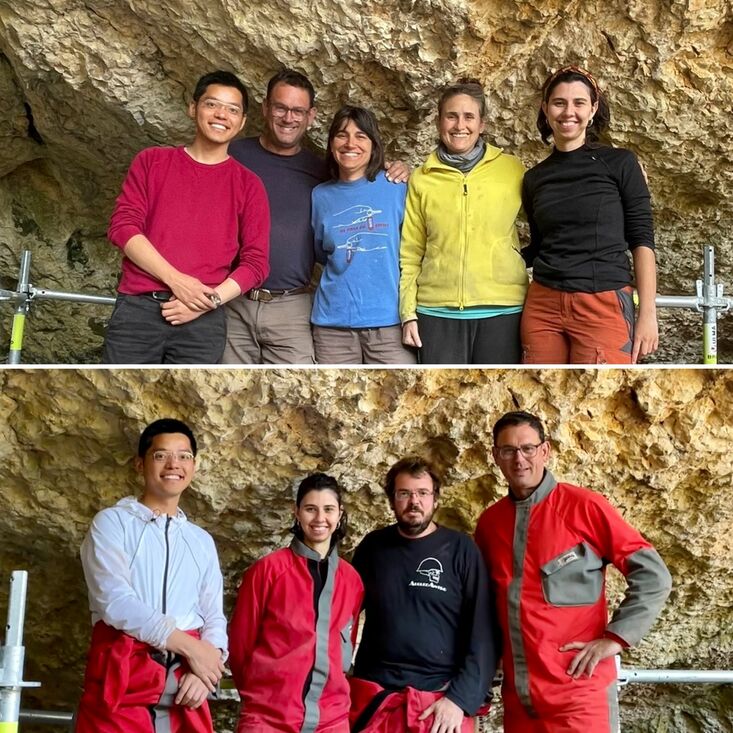Dr. Weiya Li tells us about his experience during the excavation in Atapuerca through a personal diary
Here we want to transcribe the excavation diary of Dr. Weiya Li, researcher with an MSCA-COFUND R2STAIR Fellow postdoctoral contract (GA 101034349), his research is also supported by the Spanish Ministry of Science and Innovation through the accreditation of excellence “María de Maeztu ” (CEX2019-000945-M). We think it might be interesting to know his experience, especially from a personal point of view, during the excavation campaign at the Atapuerca sites. You can get to know this researcher through his personal page.
From Tarragona to Atapuerca
Today, Ethel Allué drove Blanca (a PhD student from IPHES) and me from Tarragona to Atapuerca. We left around noon, went through thunderstorms and two coffee breaks, and finally arrived at the farmhouse near Atapuerca around 5:30 p.m.
It is my first year at Atapuerca, so everything is new to me. I share the room with other 11 people, most of them are Master or PhD students from Spain or other European countries. In China, many students are a bit resistant to going to the field, so it's amazing to see so many students are willing to join the excavation in Atapuerca!

Day 2, 18 June 2023, Sunday
Welcome to Atapuerca
Today is our first day to officially start the excavation in Atapuerca! Eudald Carbonell gave a brief welcome speech and Felipe Cuartero Monteagudo (from CENIEH) walked with us and explained briefly the three sites in Ataperca: Sima del Elefante, Galería and Gran Dolina. The findings at these sites, including new human species, different animal remains, and stone tools, are valuable for a better understanding of human evolution and past environmental conditions.
I specifically asked to work at the site of El Mirador because it is one of the few sites here in Atapuerca that has Neolithic remains. Our first day started with bringing equipment to Mirador and installing the lighting in the cave! We are a team of five this year: Ethel Allué, Josep Maria Vergès Bosch, Míriam Salas Altes from Catalonia, and Javier Iglesias from Madrid. Sometimes they speak Castellano and sometimes Catalan. Although my skill in Spanish is basic, I don't feel unconnected because they always try to explain things to me in English. I also find it is a good opportunity to improve my Spanish.

Day 3: 19 June 2023, Monday
Labels and bones
Every day, we take valuable equipment home after work and bring them back to the site the next day. As usual, our work today started with a bit of organizing, and setting up the database system and the total station. Afterwards, Josep Maria, Míriam, and Javier started to collect objects from the cave while Ethel and I took charge of labelling and cleaning the objects. Through cleaning, I was able to have a closer look at the bones, ceramics, and lithics. By reading the labels, I also picked up some new Spanish words such as “hueso” (bone in Spanish), “costilla” (rib), “húmero” (humerus), etc.
Most of the objects I processed today are bones (probably from a sheep), a few of them were burned while the rest look very fresh! After today's work, I feel that at El Mirador, no matter if it's a tiny bone fragment or a pottery sherd, each piece has been carefully documented, cleaned, and organized.

Day 4: 20 June 2023, Tuesday
Inside the cave
I continued to do similar work at El Mirador as yesterday: clean and organize the discovered objects. Whenever I finish my tasks, I like to be inside the cave and sit together with my colleagues. Today, we have two people doing the excavation, mainly using brushes and sticks, one person using total station to measure the location of the objects that need to be taken out, and one person using a PDA to document the information and send it to the computer and printer. The artefacts we found today were mainly bones, followed by ceramics and chipped stones. Javier is a forensic scientist, so he could read more information from the human bones. Ethel also told me the excavation history of El Mirador, started in 1999 by Josep Maria, herself, and some other colleagues. More than 20 years passed, and they are still working here and passing knowledge to us!
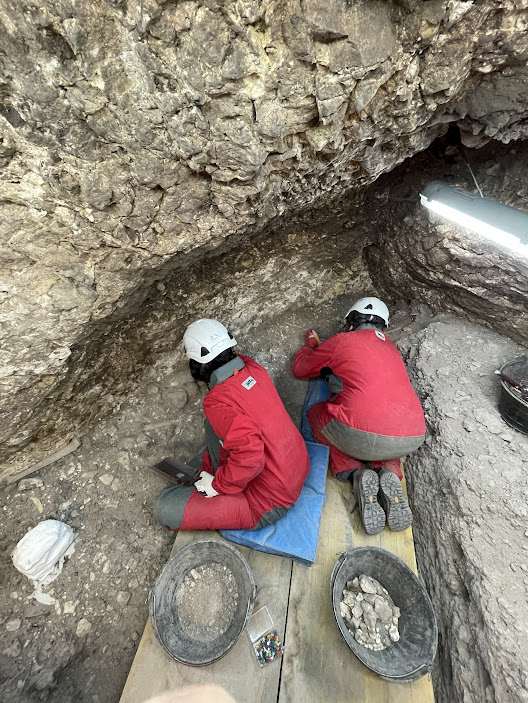
Day 5: 21 June 2023, Wednesday
Spanish numbers and a bone awl
Before taking the objects out of the site, we have to document their types, contexts, exact locations, sizes, etc. My work today started with helping to measure the sizes of the objects. Although I have been in Spain for half a year, I still have some difficulties saying the Spanish numbers, especially those over 1000.
As Ethel left yesterday, we only have four people at El Mirador. In the afternoon, Ethel kindly sent me a message to check if everything was okay. I told her that we took out abundant objects, including a bone awl, which probably was associated with making clothes in the past. Like yesterday, the majority of the objects were bone, followed by ceramics, chipped stone tools, and grinding tools.
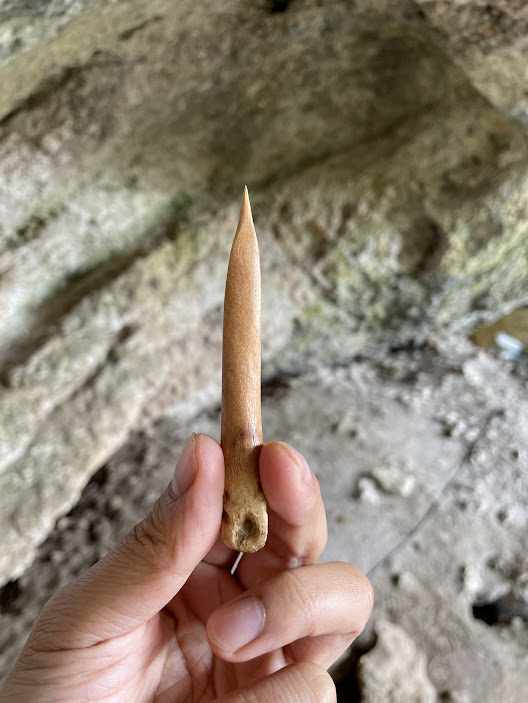
Day 6: 22 June 2023, Thursday
Today I excavated
“Just say yes”. This is what they told me when we were on the way to El Mirador today, then I realized that Josep Maria wanted me to dig today! Of course, I said yes. Míriam explained to me briefly and showed me my first square in Mirador: P39. The objective is to unveil the grey soil layer and try to find the whitish ash layer. It looked easy to excavate but after kneeling in the small space and bending my body, I started to have backache and my feet were numbed. I adjusted my gesture and continued until the coffee break. One of the interesting objects we found today is a piece of bone with cutting marks and another piece of bone that probably had been bitten by an animal (probably a dog?). Different from the previous days, today I started to say numbers in Spanish whenever possible and they understood me well!
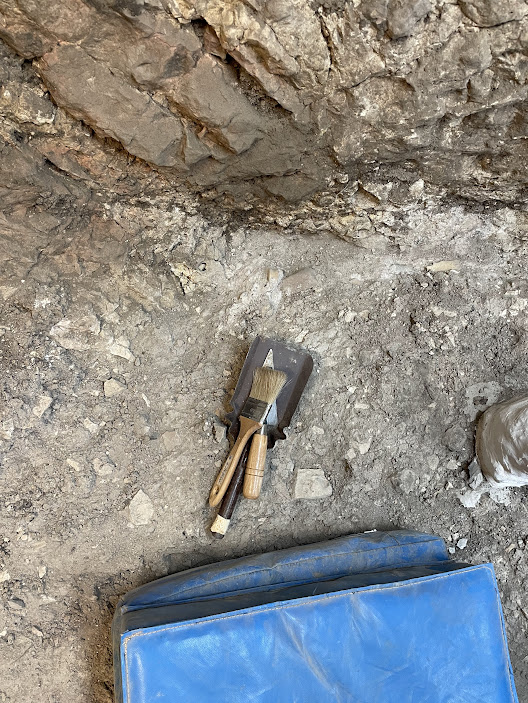
Day 7: 23 June 2023, Friday
Fiesta de San Juan
The excavation at El Mirador continued like yesterday, but today we had a BBQ to celebrate the "San Juan". This BBQ already become an annual event at Atapuerca, usually organized by PhD students. It's impressive to see so many young people gathered together and practising their traditions, and I was touched at the moment when everybody was reading a poem by the burning "spirit". After the ceremony, it's Spanish party time, filled with drinks, food, music, and dance. Interestingly, yesterday was also the Chinese Dragon Boat Festival. The "double fifth" day in the lunar calendar often has been the hottest day of the month. On that day, ancient Chinese people believed all the poisonous vapours were in the air, so some similar attempts were made to get rid of the bad things.
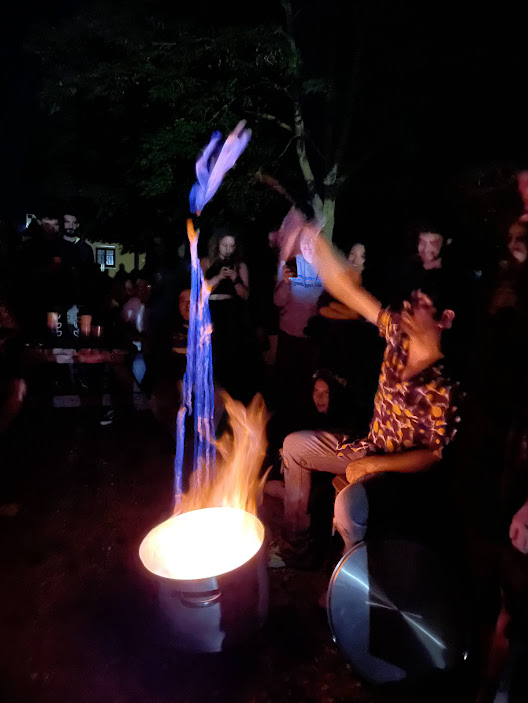
Day 8: 24 June 2023, Saturday
One day in Burgos
At Atapuerca, the excavation begins at 8:30 a.m. and ends at 3:00 p.m., from Sunday to Friday. Today is Saturday, so we have a day off. From the farmhouse, I got a free ride to Burgos. After a week of countryside life, it's nice to be in a city and I want to have my haircut. Unfortunately, most barber shops close at 2:00 pm here and I didn't make it. As I will come back to Burgos with a group to visit the Human Evolution Museum, today I chose to just walk around. My first impression of the city is good, as I always like cities with rivers. The city centre is a bit busy because of the festival. I went back early in the afternoon because of the hangover from yesterday's party and the weather is already pretty hot.
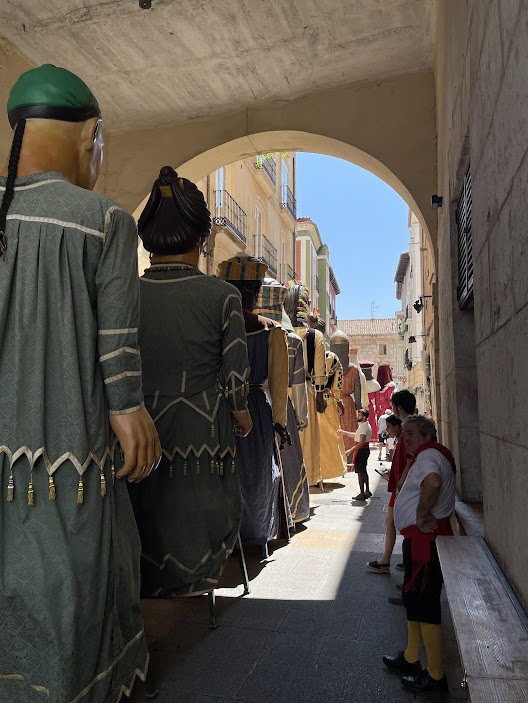
Day 9: 25 June 2023, Sunday
A pottery sherd
Today is Sunday but we still work. Javier left yesterday and we welcome a team member: Marta Fontanals Torroja. One of my interesting findings today is a pottery sherd, which probably had been used as a tool because one of its edges is curved. Different from many of the Neolithic sites I excavated in Central China, Mirador provides very few potteries and a lot of faunal remains.
After work in the afternoon, I also explored a village called Arlanzón near the farm. It seems not many people live in the village anymore.

Day 10: 26 June 2023, Monday
A piece of flint
Today, Josep Maria did some constructive work in the other cave to avoid its further collapse. In our case, Marta, Míriam, and I continued excavation and Ethel helped to document the discovered objects. Míriam was excited when she found a nice piece of flint. We were joking anything other than faunal remains will make us happy at Mirador because have found too many bones So far.
In many of the Neolithic sites I worked in China, we often found countless pottery potsherds and ground stone tools, but very few flint tools.
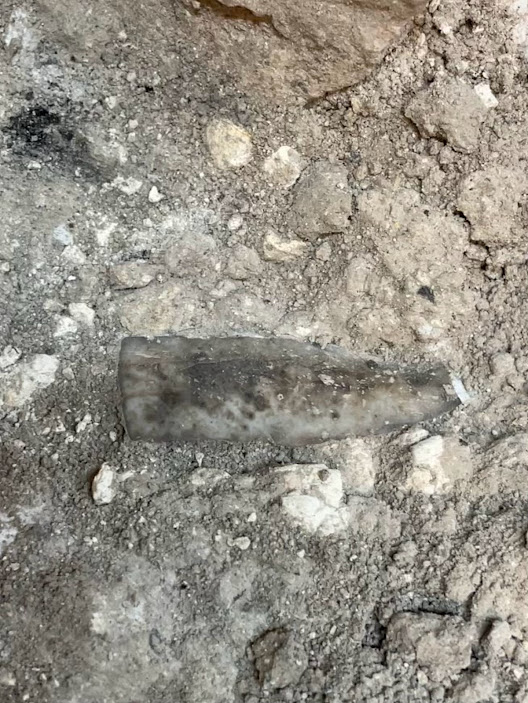
Day 11, 27 June 2023, Tuesday
A gift from the kids
Today, Josep Maria took away the soil profile in my square, making the space easier to dig. After work, I got a gift from the kids of my colleagues, it is a stone with my name written on it, both in Chinese and English. These kids come to visit every year and live with us. When their parents work at the site, they spend time in the local summer school. After lunch, Ethel drove us to the town of Ibeas. The local villagers prepared some exhibitions of photos from the Atapuerca team, dating back 1990s. In some photos, Ethel pointed out some people who are still here in Atapuerca, including herself. These photos are gifts from the village to the archaeologists, for thanking them working here continuously for decades.

Day 12, 28 June 2023, Wednesday
Dinner at the local village
Today after work, a group of us went to the o nearby village of Arlanzón to have dinner. The food available at the restaurant is mainly meat, such as chorizo, callos, and cheese. These foods, at least the animals, were already available at the site of Mirador. Because we were sitting outside and it’s getting a bit chilly. Maria, a girl from Galicia saw my clothes are too thin, so she insisted I wear her jacket. We also had a nice talk during dinner, from our favourite movies to the most embarrassing experience. Excavation is an always opportunity to meet new people and socialize more.

Day 13, 29 June 2023, Thursday
Last Day in Atapuerca
Today is my last day for the excavation. We cleaned the square with the vacuum cleaner, making it look nicer for the next person. The staff from the farmhouse also paid a visit and had a coffee break with us. Josep Maria introduced the site and they were engaged in the discussion. It was nice to see the local people are interested in the archaeological work. I took a photo of the scene because it is an excellent example showing "outreach". At the end of the work, we took a group photo to keep this nice memory of working together. I'm lucky because my team members are all kind, intelligent, and supportive of each other. During these two weeks, I got chances to talk to some colleagues that I had no chance to communicate. I also met some young and friendly people from different places. It is sad to leave but on the other hand, I have to confess that I also miss my own bed and private space. Two weeks passed fast! See you!
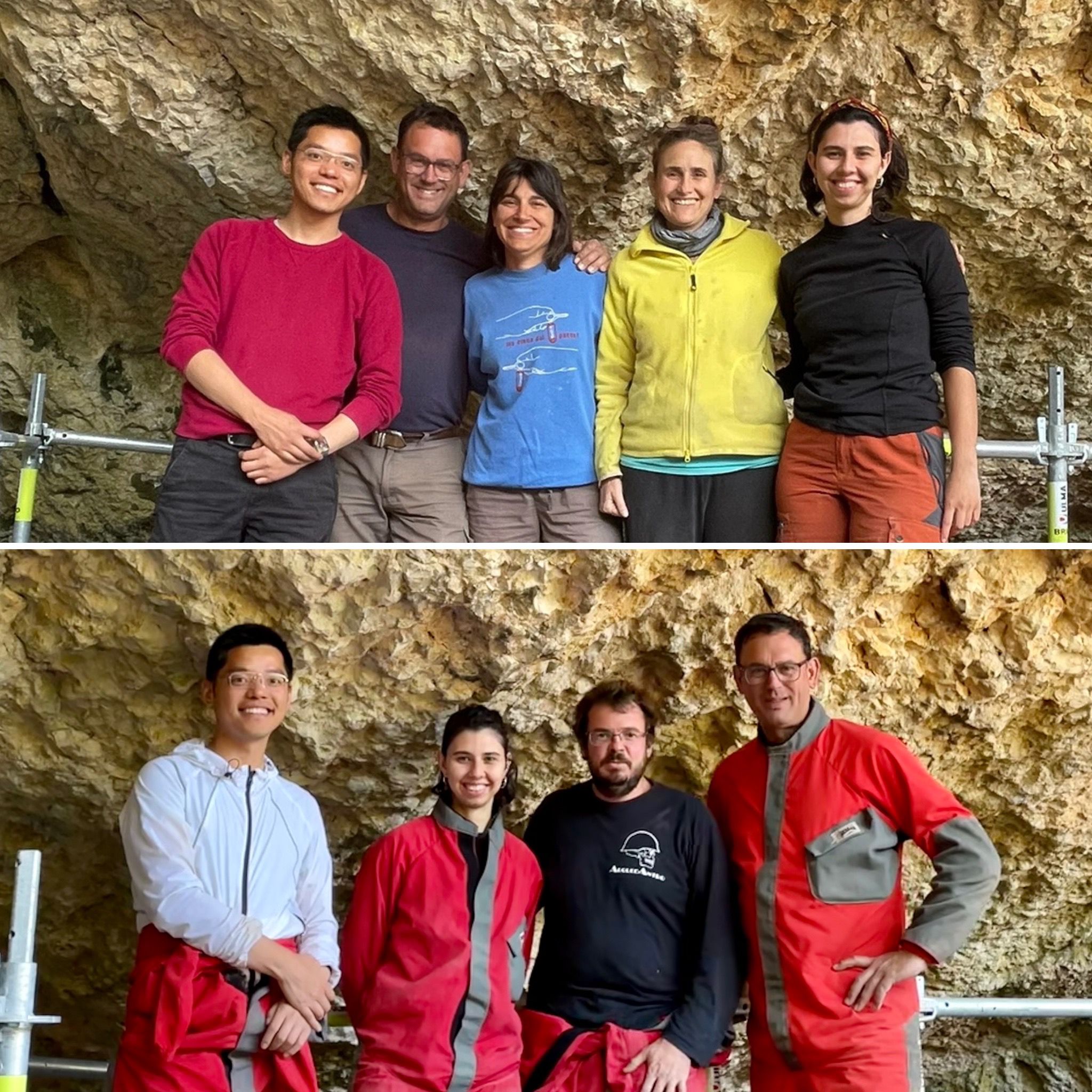
Acknowledgements
I truly thank Dr. Ethel Allué for her kind help since the beginning of this fieldwork. Dr Josep Maria Vergès Bosch, Javier Iglesias, Marta Fontanals Torroja, and Míriam Salas Altès from the Mirador team are thanked for their trust and patience during our everyday communication. I also pay gratitude to my supervisor, Dr. Deborah Barsky, who encouraged me to take this journey. Everybody else I met in Atapuerca was super nice, I will always remember your smiles!
This diary was written by Dr. Weiya Li from IPHES when he excavated at El Mirador, Atapuerca in 2023. Patricia Marín from IPHES kindly provided the translations of Castellano/Spanish and Catalan

